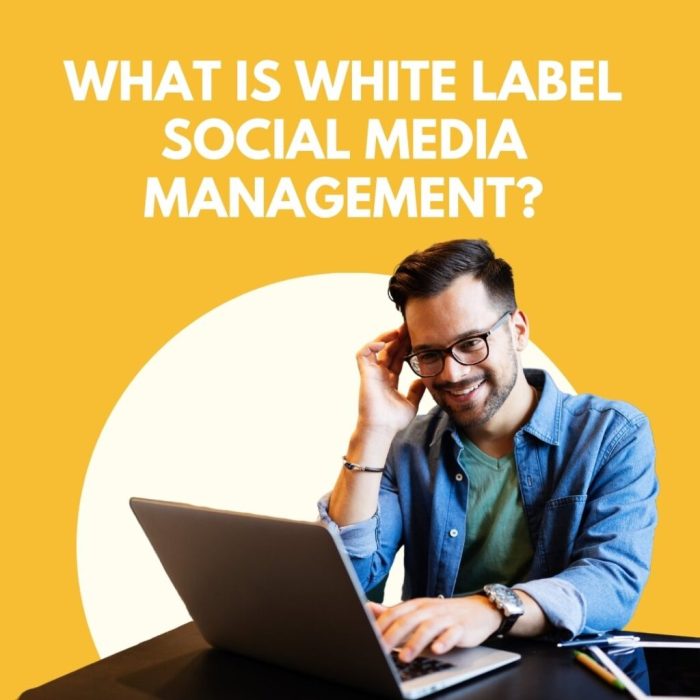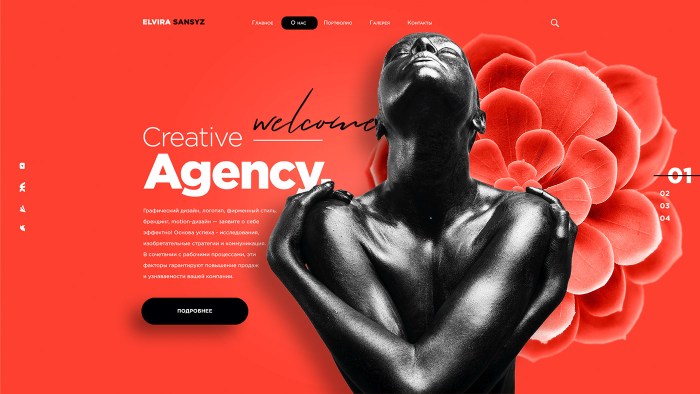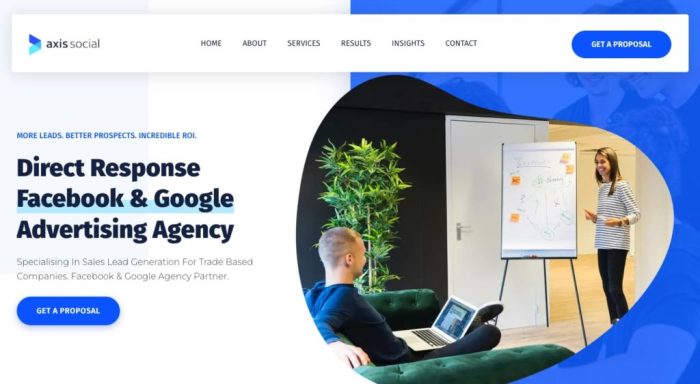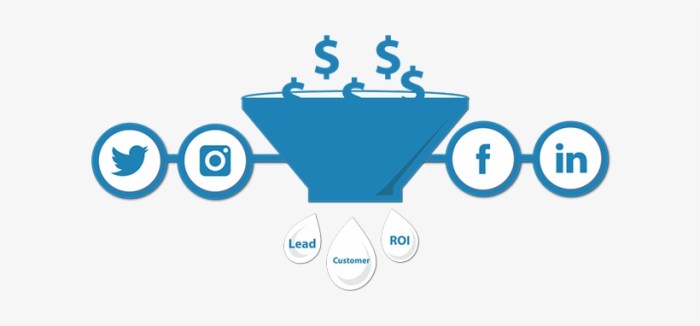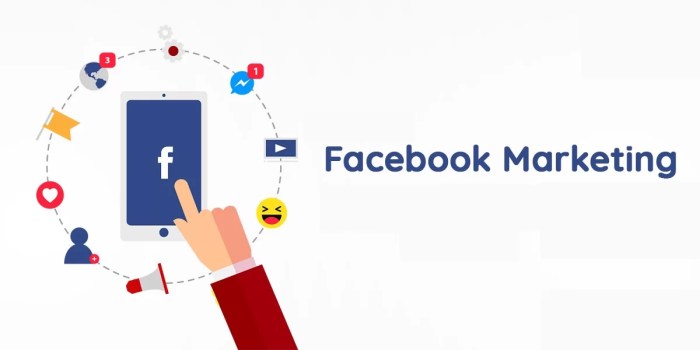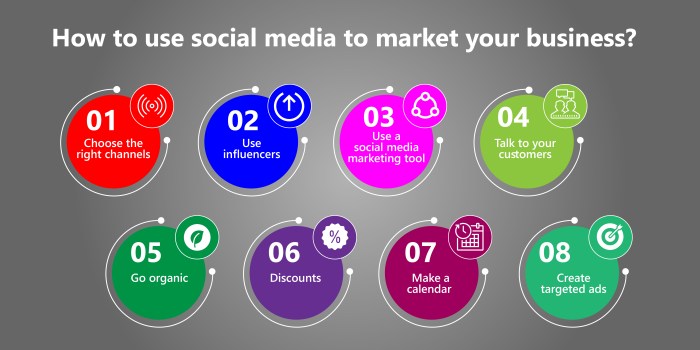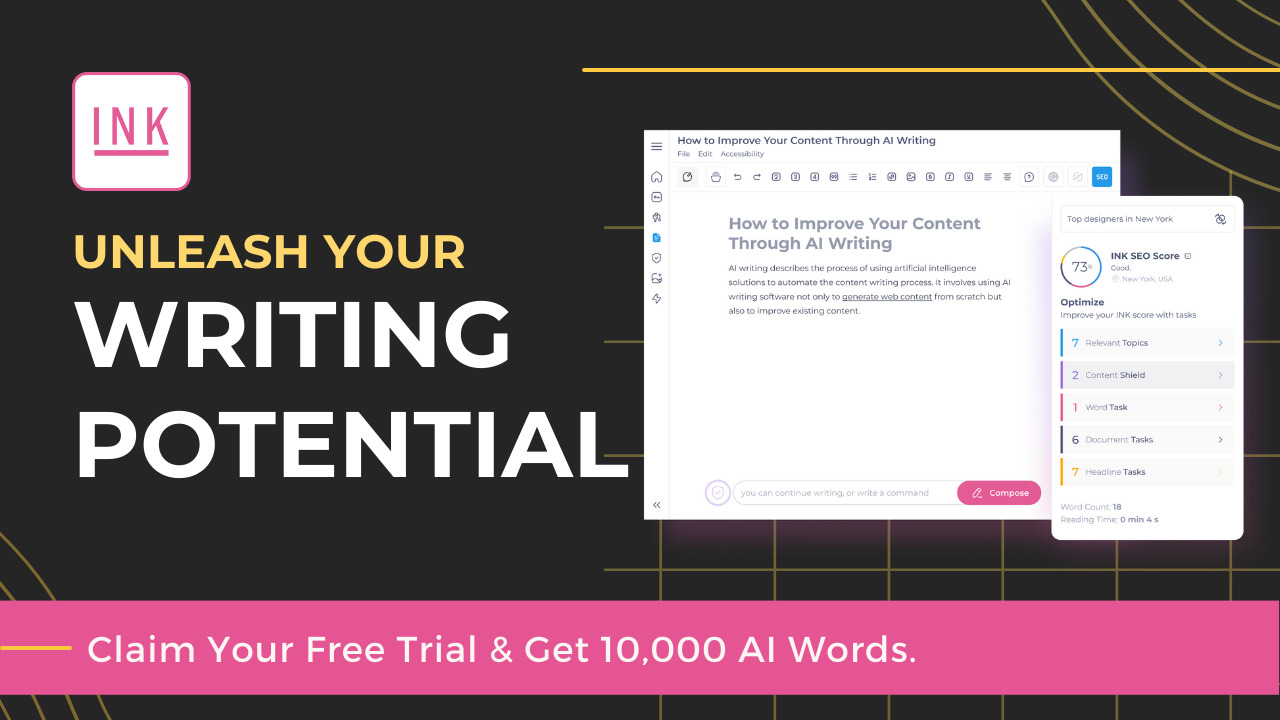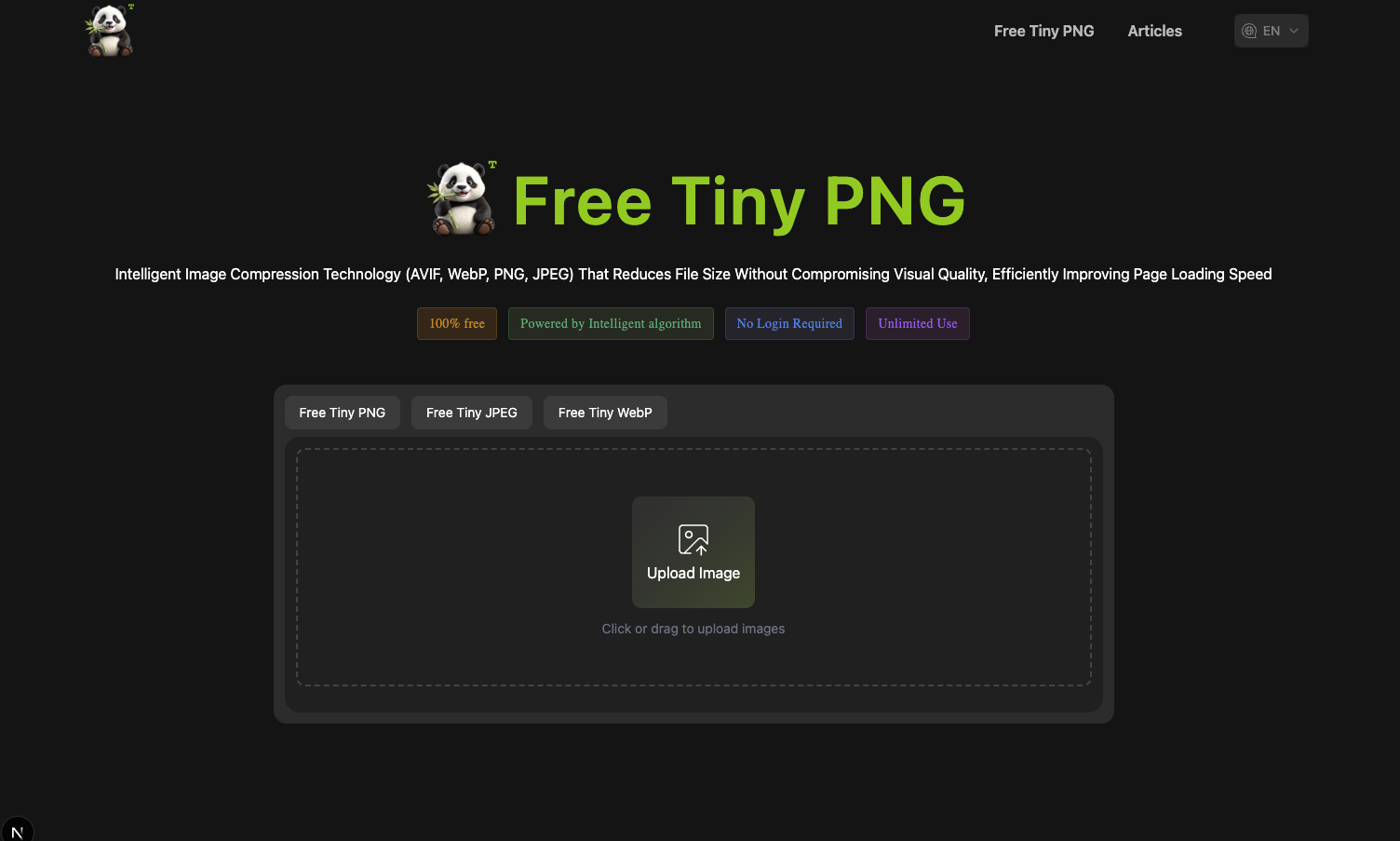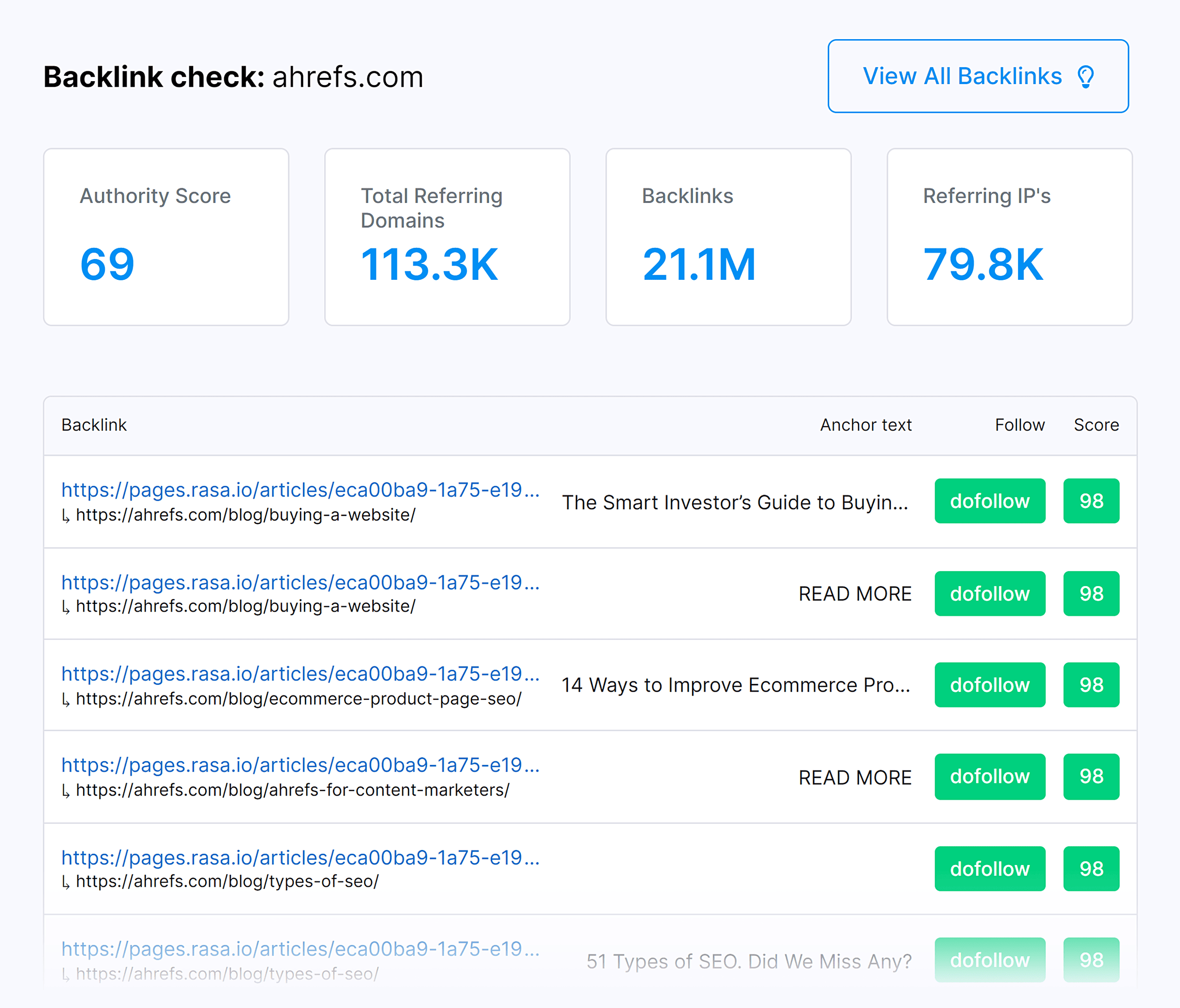Paid social media services are a powerful tool for businesses to connect with their target audience. This guide dives deep into the strategies, platforms, and best practices for maximizing your return on investment (ROI). From defining the different types of services to understanding pricing models and campaign management, we’ll cover all the essentials.
This comprehensive overview explores various facets of paid social media services, including defining the services across different platforms, examining diverse pricing models, and highlighting crucial factors in target audience identification and campaign objectives. We’ll also discuss the importance of high-quality content creation, campaign management, and tracking, while acknowledging emerging trends and ethical considerations. The guide also provides practical examples and actionable strategies to help you navigate the world of paid social media marketing effectively.
Defining Paid Social Media Services

adshark.com
Paid social media services are integral components of modern marketing strategies. They leverage the vast reach and engagement potential of social media platforms to connect businesses with their target audiences. This approach differs significantly from organic social media efforts, which rely on user interactions and platform algorithms.
Paid social media services offer a variety of tools and strategies, enabling businesses to target specific demographics, interests, and behaviors. This precision allows for a more efficient allocation of resources compared to relying solely on organic growth. Understanding the different types of paid services available is critical for maximizing their impact.
Paid Social Media Service Types
Paid social media services encompass a range of strategies to promote content and interact with audiences. These strategies are designed to increase brand visibility, drive website traffic, and generate leads or sales.
| Platform | Service Type | Description |
|---|---|---|
| Advertising Campaigns | Targeted ads are displayed in users’ feeds, on the platform, or on other websites within the Facebook family. These campaigns can be structured to achieve various objectives, such as increasing brand awareness, driving website traffic, or generating leads. | |
| Sponsored Posts | Posts that are promoted to reach a wider audience than organic posts. These posts are typically visually engaging and designed to capture attention. | |
| Boosted Posts | Similar to sponsored posts, boosted posts increase the visibility of existing posts to a larger audience. These are often used to increase engagement with existing content. | |
| Influencer Marketing | Collaborations with individuals who have a large and engaged following on social media. These influencers promote products or services to their audience, often through sponsored posts or reviews. | |
| Advertising Campaigns | Similar to Facebook advertising campaigns, these campaigns can target specific demographics and interests. Instagram ads often use high-quality visuals and videos to maximize impact. | |
| Sponsored Posts/Stories | Influencers or businesses can promote their content within Instagram’s feed or stories. These posts often highlight visually appealing products or services. | |
| Promoted Tweets | Tweets are promoted to a wider audience based on specific s, interests, or demographics. This service helps reach a larger audience on Twitter, a platform known for its real-time engagement. | |
| Sponsored Content | Content that is strategically placed in LinkedIn’s newsfeed to target professionals within specific industries or job functions. This service is effective in reaching a business-oriented audience. | |
| InMail Ads | Targeted messages are sent directly to LinkedIn users based on their profile information. These are effective for reaching specific professionals. |
Key Differences from Organic Activities
Paid social media services stand apart from organic efforts by their deliberate investment in reaching a wider audience. Organic activities rely on user interactions, algorithm favorability, and the natural reach of posts. Paid services, conversely, directly purchase visibility and audience targeting, circumventing the natural progression of organic growth. This contrasts with the organic approach, which is largely dependent on the platform’s algorithm and user engagement.
Pricing Models and Strategies
Setting the right price for paid social media services is crucial for profitability and client satisfaction. A well-defined pricing strategy considers not only the costs involved but also the value proposition delivered to clients. Understanding different pricing models and adapting them to specific campaign needs is key to achieving a positive return on investment (ROI).
Pricing models for paid social media services are diverse, each with its advantages and disadvantages. Choosing the appropriate model hinges on factors such as campaign objectives, target audience, and platform-specific requirements. Effective pricing strategies incorporate these factors to ensure value for both the service provider and the client.
Common Pricing Models
Various pricing models are prevalent in the paid social media landscape. Understanding these models allows for a strategic approach to service pricing.
- Cost-Per-Click (CPC): This model charges advertisers each time a user clicks on an ad. It’s commonly used for driving website traffic or lead generation. CPC is often favored when the primary goal is to generate immediate responses or clicks, as opposed to impressions or views.
- Cost-Per-Mile (CPM): CPM pricing structures charge advertisers based on the number of times their ads are displayed (impressions). This is useful for brand awareness campaigns where the objective is to maximize visibility rather than immediate conversions. CPM models are often associated with a wider reach.
- Cost-Per-Action (CPA): CPA models are based on the cost incurred for each desired user action, such as completing a purchase, filling out a form, or downloading a resource. This approach is well-suited for campaigns focused on achieving specific outcomes, such as conversions or sales. It’s often a key metric for businesses seeking direct, measurable results.
Optimal Pricing Strategies
Setting optimal prices for social media services demands a nuanced understanding of various factors. A strategic approach involves a careful consideration of campaign goals, target audience, and platform fees.
- Target Audience Analysis: Understanding the demographics, interests, and online behavior of the target audience is vital. Tailoring pricing strategies to specific audiences ensures that campaigns effectively reach the desired market segment, enhancing overall ROI.
- Campaign Goals: Defining clear campaign objectives, such as brand awareness, lead generation, or sales, is crucial. The chosen pricing model should directly support these goals, maximizing the impact of the campaign and aligning it with the intended outcome.
- Platform Fees: Platform-specific fees and policies significantly influence pricing strategies. Account for these factors to ensure that pricing models remain profitable and align with platform guidelines. Advertisers must be aware of the fees associated with each platform.
Importance of ROI in Pricing
Understanding return on investment (ROI) is fundamental to effective pricing strategies. ROI analysis allows for a clear evaluation of the profitability of a campaign. The ability to track and measure ROI enables adjustments to pricing models based on performance data, thereby ensuring continued profitability and optimizing the overall campaign. A strong understanding of ROI allows for a data-driven approach to campaign management and pricing.
Pricing Model Comparison
| Pricing Model | Description | Example | Advantages | Disadvantages |
|---|---|---|---|---|
| Cost-Per-Click (CPC) | Paid each time a user clicks on an ad. | $0.50 per click for a search ad | Precise targeting, measurable results | Clicks don’t always translate to conversions; a high click-through rate is needed. |
| Cost-Per-Mile (CPM) | Paid per 1000 ad impressions. | $10 per 1000 impressions for a display ad | High visibility, cost-effective for broad reach | Difficult to measure direct conversions, potentially less targeted |
| Cost-Per-Action (CPA) | Paid for each desired action (e.g., purchase, signup). | $25 per completed purchase | High conversion rate, clear ROI | Requires precise tracking, with potential for higher costs if the conversion rate is low. |
Target Audience and Campaign Objectives

Source: fastcapital360.com
Understanding your target audience is paramount for effective paid social media campaigns. A well-defined audience allows for precise targeting, maximizing campaign ROI, and achieving desired outcomes. Knowing your audience’s demographics, interests, and behaviors is key to crafting tailored messages and strategies. This section will detail how to identify key audience segments and align campaign objectives with those segments.
Identifying your target audience and aligning campaign objectives are crucial for maximizing the impact of your paid social media campaigns. This process involves creating buyer personas, which represent your ideal customers. By understanding their motivations, needs, and pain points, you can tailor your messaging and campaign objectives to resonate with them. Different campaign objectives (brand awareness, lead generation, sales) will require different approaches. By thoroughly understanding these factors, you can create more effective campaigns that yield significant results.
Identifying Key Target Audience Segments
Defining specific audience segments is vital for precise targeting. Consider demographics (age, gender, location), interests (hobbies, activities, brands they follow), and behaviors (online activity, purchasing habits). This granular approach ensures your ads reach the right people, optimizing campaign performance.
- Demographics: Age, gender, location, income, education level, occupation, family status. These factors provide foundational information for segmenting your audience.
- Interests: Hobbies, activities, brands they follow, and online communities they participate in. Interests reveal passions and preferences, enabling you to create highly targeted campaigns.
- Behaviors: Online activity (website visits, social media engagement), purchasing habits (product preferences, frequency of purchases), device usage (desktop, mobile, tablet). Behavioral data reveals how your target audience interacts with your brand and products.
Aligning Campaign Objectives with Target Audiences
Aligning campaign objectives with specific target audiences ensures that your campaigns are strategically focused. For example, a campaign aiming to generate leads should target individuals actively researching and expressing interest in your products. Conversely, a brand awareness campaign should target a wider audience segment.
- Brand Awareness: Focus on reaching a broad audience segment to increase visibility and recognition. The objective is to introduce the brand or product to potential customers.
- Lead Generation: Target individuals who are actively exploring products and services, potentially interested in making a purchase. The objective is to gather contact information and nurture leads.
- Sales: Target individuals who have demonstrated a high level of interest and intent to purchase. The objective is to drive immediate conversions and sales.
Creating Buyer Personas for Effective Targeting
Buyer personas are detailed representations of your ideal customer. They include demographics, interests, behaviors, motivations, and pain points. These detailed profiles enable you to tailor your messaging and campaigns to resonate with your target audience.
- Gathering Data: Conduct surveys, analyze website data, and review social media interactions to understand your audience. Look for patterns and insights that reveal their needs, preferences, and behaviors.
- Defining Key Characteristics: Develop a comprehensive profile that encapsulates the key attributes of your ideal customer. This should include demographic data, interests, behaviors, and psychographics.
- Developing Detailed Profiles: Create detailed profiles that go beyond basic demographics to encompass motivations, pain points, and goals. These detailed profiles provide a deep understanding of your customer.
Examples of Different Campaign Objectives
Different campaign objectives necessitate distinct targeting strategies. Consider the following examples:
| Campaign Objective | Target Audience | Example Targeting Strategy |
|---|---|---|
| Brand Awareness | Potential customers with an interest in similar products | Targeting broad audience segments with visually appealing and informative ads. |
| Lead Generation | Individuals expressing interest in specific products or services | Targeting users who have interacted with your website or social media pages. |
| Sales | High-intent customers who are ready to purchase | Targeting users who have expressed a clear intent to buy and have a high conversion rate. |
Content Creation and Optimization
High-quality content is paramount for successful paid social media campaigns. Engaging content not only captures attention but also fosters a connection with the target audience, driving conversions and brand loyalty. This section will delve into the significance of different content formats and optimization strategies.
Importance of High-Quality Content
High-quality content significantly impacts paid social media campaigns by increasing visibility, driving engagement, and ultimately, boosting conversions. Compelling content resonates with the target audience, building trust and fostering brand affinity. Content that aligns with the target audience’s interests and needs will lead to greater reach and engagement, driving more valuable results. Furthermore, high-quality content is essential for establishing a brand’s credibility and expertise within the chosen niche.
Content Formats for Paid Social Media, Paid Social Media Services
Various content formats are suitable for paid social media campaigns. Effective use of diverse formats can capture varied interests and preferences within the target audience. Images, videos, carousel posts, and stories are a few examples of impactful content types.
- Images: High-quality images are crucial for conveying messages effectively. Visually appealing images can grab attention and convey information concisely. Consider using professional photography or eye-catching graphics to ensure impact. Images can be used for product showcases, behind-the-scenes glimpses, or to convey important information succinctly.
- Videos: Video content is highly engaging and effective for demonstrating products, explaining processes, or showcasing testimonials. Short-form videos, particularly on platforms like TikTok and Instagram Reels, have proven exceptionally popular. Videos can be used for product demonstrations, customer testimonials, or educational content. Consider using animation or stop-motion techniques to add creativity.
- Carousel Posts: Carousel posts allow for multiple images or videos within a single post, ideal for presenting detailed information or showcasing various product options. They are highly effective for e-commerce and informational campaigns. This format allows for a comprehensive presentation of products or services. Include engaging captions and calls-to-action for each image in the carousel.
- Stories: Ephemeral content, like stories, creates a sense of immediacy and fosters a closer connection with the audience. Use them to share behind-the-scenes content, live Q&A sessions, or quick product updates. Stories can be used for interactive content, polls, and contests, encouraging audience participation.
Content Optimization Strategies
Optimizing content for maximum reach and engagement is essential for paid social media success. This involves careful consideration of various factors.
- Platform-Specific Optimization: Different social media platforms have varying preferences and audience demographics. Optimizing content for each platform ensures maximum visibility and engagement. For example, concise captions and eye-catching visuals work well on Twitter, while longer-form posts and high-quality videos perform well on YouTube.
- S and Hashtags: Strategic use of relevant s and hashtags expands content reach and helps in search engine optimization. Ensure that the sections are relevant to the content and the target audience. Hashtags are important for reaching a wider audience interested in specific topics.
- Audience Targeting: Understanding the target audience’s interests and preferences is key to optimizing content for maximum impact. This involves using social media platform tools to refine audience targeting and tailor content to specific groups.
- A/B Testing: A/B testing different versions of content allows for analyzing which content performs best with the audience. This data-driven approach is crucial for refining future campaigns and improving overall performance.
Examples of Effective Content Strategies
Effective content strategies vary depending on the platform and campaign objectives. Here are some examples across different platforms.
- Instagram: Showcase visually appealing products with engaging captions and high-quality images or short videos. Use carousel posts to present detailed product information. Run contests or giveaways to increase engagement.
- Facebook: Use a mix of images, videos, and carousel posts to present information about your brand. Utilize Facebook’s targeting options to reach specific demographics. Create interactive content to foster audience participation. Run targeted ads to reach potential customers.
- Twitter: Use concise and engaging captions with relevant hashtags to maximize visibility. Respond promptly to comments and questions to foster engagement. Share timely news or industry insights to establish credibility.
- TikTok: Create short, entertaining videos to grab attention. Use trending sounds and challenges to reach a wider audience. Collaborate with influencers to increase brand visibility.
Content Format, Platform, and Optimization Table
| Content Format | Ideal Platform(s) | Optimization Techniques |
|---|---|---|
| High-quality images | Instagram, Facebook, Pinterest | Use high-resolution images, compelling captions, relevant hashtags, and A/B testing. |
| Short videos | TikTok, Instagram Reels, YouTube Shorts | Use trending sounds, engaging visuals, and concise messaging; optimize for mobile viewing. |
| Carousel posts | Instagram, Facebook, Pinterest | Present multiple images/videos with clear calls to action, relevant hashtags, and high-quality visuals.s |
| Long-form videos | YouTube, Facebook | Optimize for search, use clear titles, engaging descriptions, and relevant s |
Campaign Management and Tracking

d3a7ykdi65m4cy.cloudfront.net
Effective paid social media campaigns require meticulous management and tracking to ensure they achieve desired outcomes. A robust strategy encompassing these elements allows for optimized resource allocation and maximizes return on investment. This crucial phase involves monitoring performance, adapting to emerging trends, and continuously refining the campaign for peak effectiveness.
Campaign management and tracking a dynamic processes, requiring constant monitoring and adjustment. Success hinges on meticulously analyzing data and adapting strategies based on insights gained. This iterative approach ensures the campaign stays relevant, engaging, and profitable.
Key Steps in Managing a Paid Social Media Campaign
The successful management of a paid social media campaign hinges on several key steps. These steps, when followed methodically, will maximize campaign effectiveness. First, establish clear goals and objectives for the campaign, defining what constitutes success. Then, a detailed plan outlining the target audience, the content strategy, and the budget allocation should be developed. This comprehensive plan will serve as a roadmap throughout the campaign. Next, consistent monitoring of campaign performance metrics is essential. Finally, analyzing the data and adjusting strategies based on insights is crucial for sustained success.
Tools and Platforms for Campaign Management and Tracking
Numerous tools and platforms aid in managing and tracking paid social media campaigns. These tools streamline the process, allowing marketers to focus on strategy and optimization. Platforms like Hootsuite, Buffer, Sprout Social, and others offer comprehensive dashboards to monitor various aspects of a campaign. These platforms typically provide features such as scheduling posts, tracking key metrics, and analyzing campaign performance. Furthermore, dedicated social media management tools often integrate with advertising platforms, facilitating seamless campaign management. This streamlined integration enhances efficiency and provides a unified view of the campaign’s performance.
Monitoring Campaign Performance Metrics
Campaign performance metrics provide critical insights into the effectiveness of your strategies. Understanding these metrics empowers data-driven decision-making and ensures optimal resource allocation. Essential metrics include impressions (the number of times your content was displayed), clicks (the number of times users clicked on your ads), and conversions (the number of desired actions taken, such as purchases or sign-ups). By consistently monitoring these metrics, you can assess the impact of your campaigns and identify areas needing improvement.
Analyzing Campaign Data and Adjusting Strategies
Analyzing campaign data is crucial for optimizing strategies and improving results. This involves a thorough examination of collected metrics, identifying trends, and pinpointing areas for optimization. For instance, if click-through rates are low, you might adjust your ad copy or targeting parameters. Similarly, if conversion rates are below expectations, you could reassess your landing page or call-to-action strategies. A key component of this process is using the data to refine future campaigns, ensuring continuous improvement.
Essential Tools for Campaign Management and Tracking
| Tool | Description | Key Features |
|---|---|---|
| Hootsuite | A comprehensive social media management platform | Scheduling posts, monitoring metrics, analyzing campaign performance, and integrating with advertising platforms |
| Buffer | Scheduling tool for social media posts | Scheduling posts across multiple platforms, analytics dashboards, and collaboration tools |
| Sprout Social | Social media management and analytics platform | Social listening, content scheduling, engagement tracking, and reporting |
| Google Ads | Advertising platform for paid search and social media | Detailed campaign analytics, research, and ad copy optimization |
| Facebook Ads Manager | Advertising platform specifically for Facebook and Instagram | Detailed campaign performance metrics, targeting options, and A/B testing |
Emerging Trends and Innovations
The landscape of paid social media is constantly evolving, driven by technological advancements and shifting user behaviors. Understanding and adapting to these emerging trends is crucial for maximizing campaign effectiveness and staying ahead of the curve. This section explores key innovations and their impact on the future of paid social media marketing.
The future of paid social media is being shaped by a confluence of factors, including the increasing sophistication of AI tools, the rise of short-form video content, and the growing importance of personalized experiences. Leveraging these advancements can significantly improve campaign performance and deliver better results for businesses.
AI-Powered Tools and Automation
AI-powered tools are transforming paid social media management, offering greater efficiency and optimization capabilities. These tools can analyze vast amounts of data to identify optimal targeting parameters, predict campaign performance, and automate repetitive tasks. This allows marketers to focus on strategic decisions and creative development.
- Predictive Analytics: AI algorithms can analyze historical data and current trends to predict campaign performance, enabling marketers to make data-driven adjustments and optimize campaigns in real-time. For example, a campaign targeting young professionals could leverage AI to identify emerging interests and adjust ad creatives accordingly.
- Automated Bidding Strategies: AI-powered platforms can automatically adjust bids based on real-time performance data, maximizing ROI and minimizing wasted ad spend. This dynamic bidding allows campaigns to adapt to changing market conditions and user engagement.
- Content Optimization: AI can analyze user engagement with different ad creatives and suggest improvements to enhance click-through rates and conversion rates. This involves identifying elements that resonate with target audiences and adjusting content accordingly.
Short-Form Video Dominance
The prevalence of short-form video content on social media platforms has created new opportunities for paid social media campaigns. Leveraging this trend can significantly enhance brand awareness and engagement. Brands must tailor their strategies to this shift in user behavior.
- Engaging Content Formats: Short-form video ads can be highly effective at capturing attention and conveying information quickly. Brands can utilize engaging formats like tutorials, behind-the-scenes glimpses, and entertaining product demonstrations. For instance, a clothing retailer can use short videos showcasing outfit combinations or customer testimonials to generate interest and increase engagement.
- Improved Targeting Capabilities: Platforms are continually enhancing their video targeting capabilities, allowing marketers to reach specific demographics and interests with precision. This allows brands to tailor video content to resonate with particular user groups.
- Creative Storytelling: Short-form video offers a unique opportunity for brands to tell stories and connect with audiences on an emotional level. This enables brands to develop compelling narratives that effectively communicate their brand message.
Personalized Experiences and Micro-targeting
The emphasis on personalized experiences is driving the evolution of paid social media marketing. Brands are increasingly using data to tailor their campaigns to specific audience segments, leading to higher engagement and conversion rates.
- Dynamic Creative Optimization: Personalized experiences allow marketers to serve different ads to different user segments based on their characteristics. This tailored approach improves user experience and results in more conversions.
- Sophisticated Segmentation Strategies: Marketers can leverage detailed user data to create highly specific audience segments, allowing for more targeted ad campaigns. For example, a travel company can target users who have recently searched for flights to specific destinations.
- Improved User Engagement: Personalized experiences foster stronger connections between brands and their audiences, leading to increased brand loyalty and advocacy. This involves addressing the specific needs and interests of each user segment.
Future Direction of Paid Social Media
The future of paid social media is characterized by continuous innovation and adaptation to user behaviors. Key trends include a greater emphasis on personalized experiences, AI-driven optimization, and the increasing importance of short-form video. Brands that embrace these changes will be better positioned to succeed in the dynamic social media landscape.
Ethical Considerations and Best Practices
Paid social media advertising presents a unique set of ethical considerations. Advertisers must navigate complex issues of transparency, data privacy, and potentially misleading content while adhering to platform policies and regulations. This section explores these concerns and Artikels’ best practices for responsible and effective campaigns.
Effective paid social media campaigns require a delicate balance between maximizing reach and maintaining ethical standards. A strong understanding of ethical considerations, combined with best practices, fosters trust with audiences and builds a positive brand reputation.
Ethical Dilemmas in Paid Social Media Marketing
Misleading or deceptive advertising practices are a significant concern. Companies need to ensure that their ads accurately reflect the products or services being promoted. False or exaggerated claims can erode trust and damage brand reputation. Similarly, targeting vulnerable demographics with inappropriate products or services is a critical ethical issue. Consideration should be given to the potential harm that could result from exploiting consumers who might be more susceptible to influence.
Solutions for Ethical Dilemmas
To mitigate ethical dilemmas, a comprehensive approach is necessary. Transparency in advertising is paramount. Disclose any sponsored content or partnerships. Employing clear and concise language in advertisements helps prevent ambiguity and ensures the consumer is fully informed. Additionally, implementing rigorous pre-approval processes for ad creatives and avoiding harmful stereotypes can enhance the ethical standing of campaigns.
Importance of Transparency and Data Privacy
Transparency in paid social media campaigns is crucial. Consumers deserve to know when they are interacting with advertising content and should have clear visibility into the data being collected and how it’s used. Providing users with control over their data, including the option to opt out of data collection or to review and modify their personal information, is vital.
Complying with Platform Policies and Regulations
Advertisers must adhere to the terms of service and policies of the social media platforms where they advertise. Understanding and complying with these guidelines is critical to avoid penalties and maintain a positive relationship with the platform. Regular reviews of platform policies and updates are essential to ensure continued compliance.
Best Practices for Responsible Paid Social Media Advertising
Adhering to best practices is crucial for responsible and effective paid social media advertising. This includes the following:
- Accurate and truthful advertising: Avoid making false or misleading claims. Use precise and factual language in ad copy and visuals.
- Transparency in disclosure: Label sponsored content or partnerships. Provide clear and concise explanations of any financial incentives involved.
- Respect for diverse audiences: Avoid stereotypes or harmful representations. Promote inclusivity and sensitivity in all campaign messaging.
- Protection of user data: Implement robust data privacy measures. Provide clear data collection and usage policies. Obtain explicit consent for data collection when necessary.
Closure
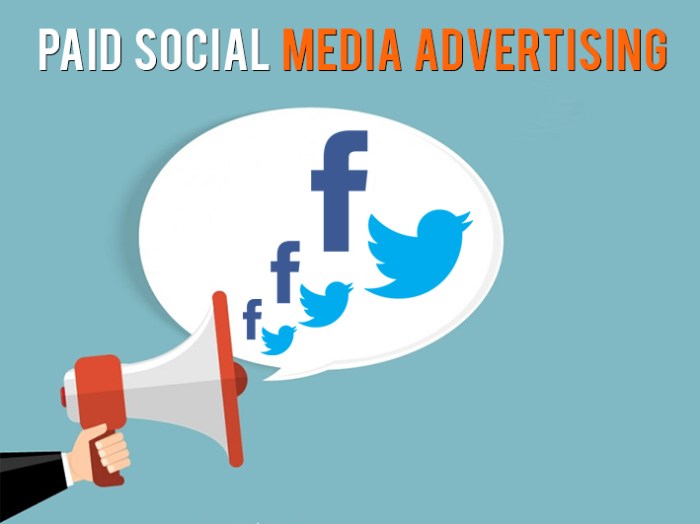
Source: truismdigitalmarketing.com
In conclusion, mastering paid social media services requires a multifaceted approach encompassing understanding platform-specific nuances, optimizing pricing strategies, and effectively targeting the right audience. Creating engaging content, meticulously managing campaigns, and consistently tracking performance are key to achieving your desired outcomes. Ultimately, by staying informed about emerging trends and adhering to ethical best practices, you can leverage paid social media to achieve significant business growth and establish a robust online presence. This guide has provided a robust foundation to start your journey in paid social media.

